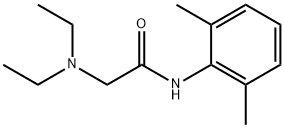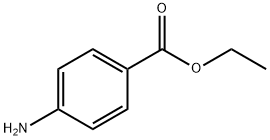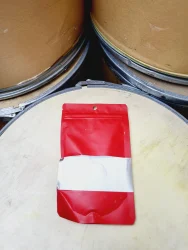Procaine hydrochloride
Synonym(s):p-Aminobenzoic acid diethylaminoethyl ester hydrochloride;4-Aminobenzoic acid 2-diethylaminoethyl ester;Novocaine hydrochloride
- CAS NO.:51-05-8
- Empirical Formula: C13H21ClN2O2
- Molecular Weight: 272.77
- MDL number: MFCD00007893
- EINECS: 200-077-2
- SAFETY DATA SHEET (SDS)
- Update Date: 2025-12-16 21:30:20

What is Procaine hydrochloride?
Description
Procaine hydrochloride, also called Novocain, or Novocaine, a topical anesthetic, which can block the nerve fiber conduction temporarilyand has a narcotic effect,strong effect, low toxicity, and non-addictive, but on the skin, mucosal penetration is weak, unsuitable for surface anesthesia, patients are used for infiltration, conduction and spinal anesthesia.
The structure of procaine hydrochloride with aromatic primary amino, easy oxidation discoloration pH, temperature, UV, oxygen and metal ions can accelerate the oxidation discoloration. The aqueous solution was stable in pH3.0~5. So preparation of procaine hydrochloride injection, it generally takes add acid to regulate pH 3.3 to 5.5, and strictly control the sterilization temperature and time. to 100 ℃ steam sterilization 30min circulation is appropriate, and should pay attention to shading, sealed save.
The above information is edited by the chemicalbook of Kui Xiongfeng.
Chemical properties
Procaine hydrochloride is a white crystalline, odorless powder that is freely soluble in water, but less soluble in alcohol and almost insoluble in ether; solutions acid to litmus. Because the ester bond in the structure can be hydrolyzed to produce p-aminobenzoic acid and diethylaminoethanol, under certain conditions, p-aminobenzoic acid can be further decarboxylated to produce toxic aniline. Procaine hydrochloride has aromatic primary amino groups in its structure, which can be easily oxidized and discolored. pH, temperature, ultraviolet light, oxygen and metal ions can accelerate the oxidation and discoloration.
The Uses of Procaine hydrochloride
Procaine is a local anesthetic of the amino ester group that is primarily used as a topical anesthetic. Procaine is also used to control the pain of intramuscular injection of penicillin as well as in dentistry.
What are the applications of Application
Procaine hydrochloride has been used as a component of Krebs Henseleit buffer for incubating the left ventricular cardiac tissue in its resting length. It has also been used as an inducer in M9 media for induction assay. It is a sodium channel blocker and DNA methylation inhibitor.
Definition
ChEBI: Procaine hydrochloride is an organic molecular entity.
brand name
Novocain (Hospira).
General Description
Procaine hydrochloride is a synthetic compound that belongs to the class of local anesthetic drugs. It has a structure similar to the natural compounds that participate in nerve impulse transmission. It shows interaction with the cellular membranes causing membrane lipids to expand, membrane-bound calcium to displace and change the structure of the proteins that are responsible for regulating the cell permeability and shape.
Hazard
Toxic by ingestion.
Contact allergens
Procaine is a local anesthetic with para-amino function. Sensitization mainly concerns the medical, dental, and veterinary professions.
Biochem/physiol Actions
Procaine is a Na+ channel blocker, commonly used as an anesthetic agent and is considered safer than cocaine. It is also useful as a painkiller to treat pain, associated with joints and tendons.
Safety Profile
Poison by ingestion, subcutaneous, intravenous, and intraperitoneal routes. Human systemic effects: acute renal fdure. May have human reproductive effects. See also ESTERS. When heated to decomposition it emits very toxic fumes of HCl and NO,. Used as a local anesthetic.
Pharmacokinetics
Procaine hydrochloride is the hydrochloride of paraaminobenzoyl-diethylaminoethanol. The dosage is from one to three times that of cocaine, and its anesthetic and irritant actions are perhaps slightly less. The drug on direct application acts by paralyzing the sensory nerve fibrils without preceding stimulation, but in higher concentrations it will paralyze all other nerve fibers.
Side Effects
The possible side effects of procaine hydrochloride including dizziness or drowsiness; anxiety or restlessness; nausea or vomiting; or. trembling, shaking, or seizures (convulsions).
Applications
Procaine hydrochloride, also called Novocain, or Novocaine, a topical anesthetic, which can block the nerve fiber conduction temporarilyand has a narcotic effect,strong effect, low toxicity, and non-addictive, but on the skin, mucosal penetration is weak, unsuitable for surface anesthesia, patients are used for infiltration, conduction and spinal anesthesia.
Purification Methods
Novocain is recrystallised from aqueous EtOH. It is soluble at 25o in H2O (86.3%), EtOH (2.6%) and Me2CO (1%), it is slightly soluble in CHCl3, but is almost insoluble in Et2O. The anhydrous free base is recrystallised from ligroin or Et2O and has m 61o. [Einhorn Justus Liebigs Ann Chem 371 125 1909, IR: Szymanski & Panzica J Amer Pharm Assoc 47 443 1958, Beilstein 14 IV 1138.]
Mode of action
Procaine Hydrochloride is the hydrochloride salt form of procaine, a benzoic acid derivative with local anesthetic and antiarrhythmic properties. Procaine binds to and inhibits voltage-gated sodium channels, thereby inhibiting the ionic flux required for the initiation and conduction of impulses. In addition, this agent increases electrical excitation threshold, reduces rate of rise of action potential and slows nerve impulse propagation thereby causing loss of sensation.
Precautions
Procaine hydrochloride is used for infiltration, nerve block, peridural and spinal anest sthesia. It is considered a fairly safe drug if suitable precautions are observed. However, as with any anesthetic, idiosyncrasy may be encountered. Slow administration and avoidance of accidental intravenous injection are advisable. In local administration, if increased sensitivity to procaine is suspected, as in patients with cardiac disease or endocrine disorders (such as hyperthyroidism), an initial small dose to test tolerance is recommended. (Physicians' Desk Reference, 35th ed, p. 695)
Properties of Procaine hydrochloride
| Melting point: | 155-156 °C(lit.) |
| Boiling point: | 195-196°C 17mm |
| Density | 1.1761 (rough estimate) |
| refractive index | 1.5270 (estimate) |
| Flash point: | 195-196°C/17mm |
| storage temp. | 2-8°C |
| solubility | Solution S is clear (2.2.1) and colourless (2.2.2, Method II). |
| form | Crystals or Crystalline Powder |
| color | Colorless to white |
| Water Solubility | soluble |
| Sensitive | Air Sensitive |
| Merck | 14,7757 |
| BRN | 3917802 |
| Stability: | Stable. Incompatible with strong oxidizing agents. |
| CAS DataBase Reference | 51-05-8(CAS DataBase Reference) |
| EPA Substance Registry System | Procaine hydrochloride (51-05-8) |
Safety information for Procaine hydrochloride
| Signal word | Danger |
| Pictogram(s) |
 Skull and Crossbones Acute Toxicity GHS06 |
| GHS Hazard Statements |
H301:Acute toxicity,oral H317:Sensitisation, Skin |
| Precautionary Statement Codes |
P261:Avoid breathing dust/fume/gas/mist/vapours/spray. P264:Wash hands thoroughly after handling. P264:Wash skin thouroughly after handling. P270:Do not eat, drink or smoke when using this product. P280:Wear protective gloves/protective clothing/eye protection/face protection. P301+P310:IF SWALLOWED: Immediately call a POISON CENTER or doctor/physician. P302+P352:IF ON SKIN: wash with plenty of soap and water. |
Computed Descriptors for Procaine hydrochloride
| InChIKey | HCBIBCJNVBAKAB-UHFFFAOYSA-N |
Procaine hydrochloride manufacturer
Ronak Alkalies And Chemicals Private Limited
New Products
Indole Methyl Resin tert-butyl 9-methoxy-3-azaspiro[5.5]undecane-3-carboxylate Boc-His(Boc)-OH 2-CTC Resin 4-Chloro-7-tosy1-7Hpyrrolo[2,3-d]pyrimidine 5,7-Dibromo-1H-indole 2,5-dichloro-N-hydroxy-4,6-dimethylpyridine-3-carboximidamide 2,2-Dimethoxy-7-azaspiro[3.5]nonane hydrochloride 4-chloromethyl-5-methyl-1,3-dioxol-2-one (DMDO-Cl) R-2-BENZYLOXY PROPIONIC ACID 1,1’-CARBONYLDIIMIDAZOLE 1,1’-CARBONYLDI (1,2-4 TRIAZOLE) N-METHYL INDAZOLE-3-CARBOXYLIC ACID 4-((2-hydroxyethyl)thio)benzoic acid 1-(TERT-BUTOXYCARBONYL)-2-PYRROLIDINONE Methyl 6-methylnicotinate 3-Pyridineacrylic acid tert-Butyl carbazate TETRAHYDRO-2H-PYRAN-3-OL 2-((4-morpholinophenylamino) (methylthio) methylene) malononitrile 3-(4-morpholinophenylamino)-5-amino-1H-pyrazole-4-carbonitrile 2,4-dihydroxybenzaldehyde 1,3-Diethyl-1,3-Diphenylurea Methyl 2-methylquinoline-6-carboxylateRelated products of tetrahydrofuran



![p-chloro-alpha-[2-(dimethylamino)-1-methylethyl]-alpha-methylphenethyl alcohol hydrochloride](https://img.chemicalbook.in/CAS/GIF/1215-83-4.gif)


![4-AMINO-N-[2-(DIETHYLAMINO)ETHYL]BENZAMIDE](https://img.chemicalbook.in/StructureFile/ChemBookStructure1/GIF/CB1211904.gif)

You may like
-
 Procaine Hydrochloride CAS 51-05-8View Details
Procaine Hydrochloride CAS 51-05-8View Details
51-05-8 -
 Procaine HCl 98% CAS 51-05-8View Details
Procaine HCl 98% CAS 51-05-8View Details
51-05-8 -
 Procaine HCL API PowderView Details
Procaine HCL API PowderView Details
51-05-8 -
 RAW CAS 51-05-8 Procaine Hydrochloride APIView Details
RAW CAS 51-05-8 Procaine Hydrochloride APIView Details
51-05-8 -
 Procaine Hcl Powder, Grade Standard: USPView Details
Procaine Hcl Powder, Grade Standard: USPView Details
51-05-8 -
 Procaine Hydrochloride Api, CHEMLAND IND, 25 KgView Details
Procaine Hydrochloride Api, CHEMLAND IND, 25 KgView Details
51-05-8 -
 Procaine Hcl Powder, Grade Standard: BPView Details
Procaine Hcl Powder, Grade Standard: BPView Details
51-05-8 -
 Procaine hydrochloride (51-05-8)View Details
Procaine hydrochloride (51-05-8)View Details
51-05-8
